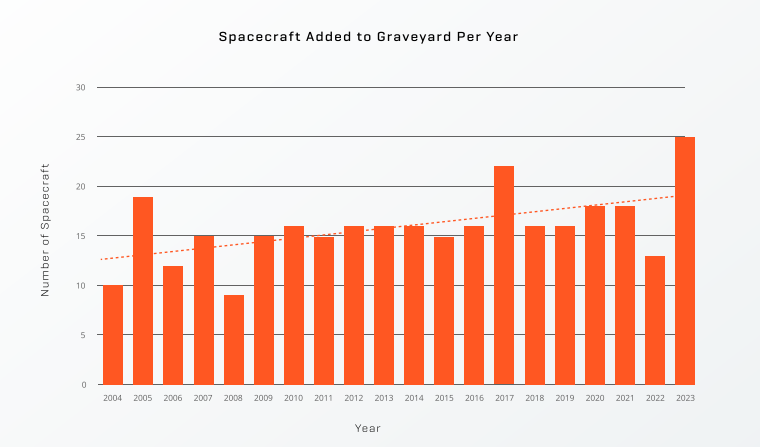I love a good space story. Especially the ones of adventure, risk, technology and humans overcoming challenges presented by the cosmos.
Enter our recently released report. Positioned through the lifecycle of a satellite, it makes for the start of a fascinating story. From launch to on-orbit missions, to end of life, we have found the most interesting trends in our data to share. Behind each of the facts and figures in the report is a developing story that we should all be paying attention to.
The main findings? Yes, there is an increasing risk, the number of launches is increasing, as are the number of spacecraft being deployed, the increase in inactive satellites and distances between spacecraft is decreasing, not just in LEO, but also in GEO. The state of space is sending some strong warning signals that we are not acting quickly enough.

Courtesy: Slingshot Aerospace
However, it is not all doom and gloom. After all this column is about Good Space, and there are two trends in the report that point to more responsible behaviour in space.
- Geo Graveyard – Our analysts have been tracking the movement of GEO spacecraft out to Graveyard orbit and have seen a positive trend: over 86% of spacecraft at the end of their life are being moved into graveyard. This points to an increase in the responsible behaviour of owner/operators who understand the need to keep GEO slots open to the next users.
- Spacecraft propulsion – Another positive trend is in the technical innovation of spacecraft, specifically around having propulsion and manoeuvrability capabilities with over 80% of active spacecraft on-orbit with propulsion or de-orbiting capability. This is up from 65% in 2018, and is a positive move towards more spacecraft having the ability to avoid collisions as well as de-orbit at end of life.
We plan to explore some of these stories in-depth over the coming weeks and months, and to also look at other trends for the 2024 version. Until then, while data might equal power, it is how we act on the data that will tell the true story of humans in space.







